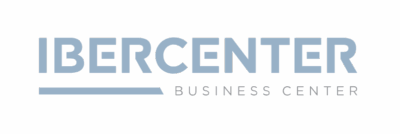Discover the best digital tools por remote work
Remote work has evolved from a temporary solution into a new way of understanding professional life. An increasing number of companies are adopting hybrid or fully online models, and professionals value the freedom to work from anywhere. However, this flexibility also requires new skills: knowing how to organize time, communicate remotely, and maintain productive while maintaining a healthy work–life balance.
In this context, digital tools have become indispensable allies. From video conferencing platforms to task managers and cloud services, they help us to stay connected, coordinate projects, and collaborate in real time, no matter the distance. Choosing the right ones can make the difference between a dispersed team and a truly efficient one.
That is why, in this article, we show a selection of the most useful digital tools for remote work and how to combine them with flexible work environments that enhance your performance.
💡 Why are digital tools so important for Remote Work?
Working from home or from anywhere in the world sounds idyllic: no traffic jams, no rigid schedules and the freedom to design your own workspace. But behind that flexibility also lies a great challenge: maintaining communication, organization, and team motivation. This is where digital tools make all the difference.
These platforms not only make daily tasks easier but also act as a bridge connecting people, ideas, and projects. Thanks to them, teams can share information in real time, coordinate goals, measure results, and keep the corporate culture alive even if each member is in a different city.
Furthermore, digital tools offer something that was previously unthinkable: the ability to work efficiently and collaboratively without being physically together. They allow you to record meetings, organize shared calendars, manage complex projects, and securely store documents in the cloud. All of this contributes to a more agile, transparent, and productive work environment.
On the other hand, their value is not limited to efficiency. They also foster creativity, autonomy, and work life balance. Being able to choose where and how to work without losing connection with the team, increases satisfaction and reduces stress. As a result, businesses not only gain in productivity but also in well-being and talent retention.
However, the success of remote work does not depend solely on using technology, but on using the right technology. Choosing tools that adapt to your team’s needs, integrating them effectively, and promoting their responsible use are key steps for digitalization to be truly effective.
In short, digital tools are not just a complement to remote work: they are the engine that makes it possible. And when combined with flexible workspaces, well-equipped meeting rooms, or services like a virtual office, they create a professional ecosystem that blends the best of the digital and in person worlds because we must not forget how important it is for mental health to separate environments and socialize.
Types of Essential Digital Tools
🗣️ Communication and Video Conferencing Tools

If there is one aspect that defines the success of remote work, it is communication.
In an environment where teams do not share a physical space, maintaining constant, fluid and effective contact becomes a priority. Digital tools focused on communication and video calls are the common thread that keeps professionals united regardless of the distance.
💬 Connectivity and Collaboration Without Barriers
Real time communication platforms have transformed the way we interact at work. We no longer depend on email or in person meetings to coordinate tasks or solve queries. Nowadays, with just one click, we can start a video call, share a screen, or hold a team conversation from any device.
Some of the most popular tools are Zoom, Microsoft Teams, Google Meet, and Slack each with its own advantages:
- Zoom has become synonymous with video calls. Its ease of use, stability, and advanced features (such as session recording and breakout rooms) make it ideal for large teams, training sessions, or client presentations.
- Microsoft Teams stands out for its integration with the Office 365 suite, allowing users to chat, hold video calls, and collaborate on documents in real time, all within the same environment.
- Google Meet is perfect for those who already work with Google Workspace. Its simple interface and calendar synchronization make scheduling meetings effortless.
- Slack originally created as a corporate chat tool, has evolved into a comprehensive communication platform with calls, thematic channels, and automations that simplify daily work management.
🎥 Beyond the Screen: Hybrid and Professional Spaces
While these digital tools facilitate online communication, there are moments when an in-person meeting makes all the difference. Ideas flow better face to face, creativity increases, and professional relationships are strengthened. In such cases, having the right environment is key.
Therefore, if you work remotely but need a professional space to meet with your team or clients, Ibercenter offers modern meeting rooms equipped with the latest audiovisual technology and located in strategic areas of the city. This way, you can combine the flexibility of digital work with the comfort of a physical environment designed for productivity.
🔄 Communication That Drives Productivity
Adopting the right tools not only improves efficiency but also team cohesion. Good communication reduces errors, prevents misunderstandings, and strengthens corporate culture. The key lies in defining clear channels which platform to use for each type of interaction and how to maintain the balance between immediacy and focus.
In short, communication and video conferencing tools are the foundation upon which remote work is built. They allow distance to disappear, keep projects moving forward, and help people to stay connected, no matter where they work from.
📋 Project Management Tools

When working remotely, keeping a team coordinated can be quite a challenge. Projects move at different speeds, deadlines pile up, and scattered communication can lead to confusion. That is why digital project management tools are essential: they allow you to organize tasks, assign responsibilities and visualize progress clearly and collaboratively.
🧩 Organization and Clarity in a Distributed Environment
The greatest benefit of these platforms is that they centralize information. Instead of relying on countless emails or chats, all work is stored in a single location. Thus, every team member knows exactly what to do, when they need to do it and how their task fits into the overall project.
Among the most popular options are Trello, Asana, Monday.com, and ClickUp, all designed to enhance productivity and transparency:
- Trello is one of the most intuitive and visual tools. It uses boards, lists, and cards to track each task’s progress. It is ideal for small teams or projects that require flexibility.
- Asana offers a more detailed structure, perfect for teams managing multiple projects at once. Its calendar, timeline, and workload views facilitate strategic planning.
- Monday.com stands out for its high level of customization. It allows teams to adapt the interface to their specific needs—from marketing to software development.
- ClickUp, on the other hand, integrates task management, goal tracking, and communication tools, making it a true all-in-one solution.
These platforms not only help manage tasks but also strengthen internal communication. Many include features such as comments, mentions, and real time notifications, keeping project discussions tied to the relevant information. This reduces errors, prevents misunderstandings, and keeps everyone aligned.
💡 Efficiency, Visibility, and Balance
Digital project management tools not only provide efficiency but also visibility. Leaders can monitor overall progress, identify bottlenecks, and reassign tasks when needed. This transparency fosters trust and personal accountability, two key pillars of remote work.
Furthermore, they allow for balancing workloads and improving team well-being. Visualizing progress boosts motivation and knowing tasks are well distributed helps to reduce stress and overwork.
🌐 Technology and Collaborative Spaces
Although these platforms digitalize coordination, remote work does not always mean isolation. Sometimes, teams need to meet physically to brainstorm or close important projects. In these cases, combining digital tools with on-demand collaborative spaces ensures the perfect balance between the virtual and the tangible.
In summary, project management tools are the backbone of remote work. They allow for planning, executing, and review every stage of a project with order and transparency. And when combined with collaborative and flexible environments, such as those offered by Ibercenter, the result is a more efficient, connected, and human workflow.
☁️ Cloud Storage and Collaboration Tools

One of the biggest challenges of remote work is keeping all information accessible and up to date for every team member. How many times have you encountered someone working on an outdated version of a document or worse, an important file getting lost in endless email threads?
That is where cloud storage and collaboration tools become indispensable.
📂 The Power of Having Everything at Hand, Anywhere
Thanks to the cloud, files no longer depend on a single device. You can start a project on your computer, continue it on your tablet, and review it from your phone without losing progress. Changes sync instantly, ensuring everyone works on the latest version.
Among the most popular tools are Google Drive, Dropbox, OneDrive, and Box. All of them allow you to upload, organize and share documents, images, or presentations, as well as collaborate in real time.
- Google Drive stands out for its integration with Google Workspace. You can create documents, spreadsheets and online presentations that multiple users can edit simultaneously. Its permission system makes it ideal for distributed teams.
- Dropbox focuses on simplicity and security. Its automatic sync and backup features ensure files are always available, even if a device fails.
- OneDrive, from Microsoft, integrates perfectly with the Office 365 suite, allowing users to edit files directly in Word, Excel, or PowerPoint. It is perfect for businesses already working in Microsoft environments.
- Box is geared toward businesses requiring advanced security and centralized data control. It allows for managing Access and establishing centralized storage policies.
💬 Collaboration Without Limits
These tools do not just store files, they also foster collaboration. Team members can leave comments, suggestions, and real-time edits, avoiding the chaos of multiple document versions. The result: smoother teamwork without endless email chains.
Furthermore, many of them are integrated with project management tools, CRMs, and communication platforms like Slack or Teams, creating a fully connected and an efficient digital ecosystem.
🌍 Synchrony Between the Digital and the Physical
Although remote work is rooted in the digital world, having access to well-equipped physical spaces remains essential. At Ibercenter, we believe productivity stems from flexibility. Our coworking and flexible office spaces combine the comfort of a professional setting with the freedom of digital work.
Imagine this: you work from home during the week, but on Friday you meet your team in a modern coworking space, with great connectivity and everything you need to collaborate face to face. That blend of online and in-person work enhances creativity and maintains the human connection without compromising technological efficiency.
🔐 Security and Trust
Trust is everything. Cloud tools include data encryption, two factor authentication and automatic backups to ensure your information is always protected. However, it is important to follow best practices using strong passwords and restricting access based on user roles.
🎓 Online Learning and Continuous Training Tools
In current workplace, training is no longer an occasional activity, it is a constant necessity. Technological change, new methodologies and market evolution require professionals who continuously learn and adapt. Fortunately, digital tools have revolutionized the way we access knowledge.
🌐 Learn from Anywhere
Online training platforms let you study at your own pace, from anywhere, with high-quality content. You no longer need to attend a physical classroom to gain new skills; just an internet connection and the motivation to grow.
Some of the most popular platforms include Coursera, Udemy, LinkedIn Learning, and Domestika:
- Coursera offers courses and programs from top universities and companies worldwide — Ideal for academic or professional certifications.
- Udemy is one of the most versatile options, providing courses on nearly any topic — from coding to leadership — taught by experts across various industries.
- LinkedIn Learning combines education with professional development, focusing on in-demand skills that connect directly to your LinkedIn profile.
- Domestika, popular in creative fields, specializes in design, marketing, and communication courses with a practical, visually engaging approach.
These tools support both individual and corporate learning. Companies can train their teams, create custom courses, and track progress — an effective way to promote continuous improvement and stay competitive.
💡 Beyond the Screen: Collaborative Learning
Learning doesn’t always happen alone. Group dynamics, idea exchange, and in-person workshops often enhance the learning process. That’s why combining online training with physical on-site learning spaces can be so effective.
At Ibercenter, we offer training rooms in various sizes — perfect for workshops, seminars, or corporate courses. Designed to encourage participation and interaction, they include all the technology needed to complement the digital learning experience.
🔄 Continuous Learning: A Growth Mindset
The true value of digital learning tools lies not only in the access they provide but also in the mindset they foster. Learning becomes a habit, not an occasional task.
Dedicating just a few hours each week to improving a skill or exploring a new tool can make a significant difference in any career. In a constantly changing world, knowledge is the best investment.
⏰ Personal Productivity and Time Management Tools
Remote work can be liberating — but it also challenges our focus. Without fixed schedules or direct supervision, it’s easy to multitask or lose track of time. That’s why mastering personal organization is key—and digital productivity tools have become essential allies.
🧭 Finding Balance Between Efficiency and Well-Being
Productivity isn’t about working longer — it’s about working smarter. Digital tools for personal management help structure your the day, set priorities, and mantein a clear, focused mind.
Some of the most useful tools include Notion, Todoist, RescueTime, and Forest, each with its own unique approach:
- Notion is the Swiss army knife of digital organization. It combines notes, tasks, databases, and calendars in one customizable workspace — perfect for those seeking an all-in-one tool.
- Todoist is ideal for simplicity lovers. Its clean interface and labeling system make it easy to create task lists, set reminders, and track weekly productivity.
- RescueTime goes a step further by analyzing how you spend time on your computer and providing detailed reports on your digital habits—great for identifying distractions and optimizing focus.
- Forest turns concentration into a game. Each time you resist checking your phone, a virtual tree grows — an original and motivating way to stay focused.
🔄 From Routine to Habit
These tools are powerful not just because of their features, but because they help build sustainable habits. Structuring work blocks, planning breaks, and setting realistic goals are essential for maintaining long-term energy and motivation.
Many of them integrate seamlessly with each other — for example, syncing your Google Calendar with Notion or Todoist, linking Slack to reminders, or automating tasks with Zapier. This creates a coordinated digital ecosystem that reduces mental load and boosts efficiency.
💼 Purposeful Productivity
Time management impacts not only performance but also well-being. A worker who organizes their day effectively can focus better, rest properly, and stay motivated. In remote work — where the line between personal and professional life can blur—this is especially crucial.
Ultimately, productivity in remote work isn’t about pressure or overtime — it’s about strategy. With discipline, focus, and the right tools, remote work can provide efficiency, balance, and freedom.






